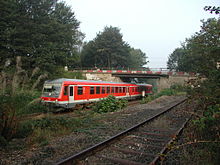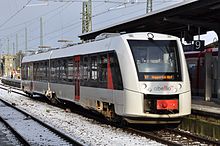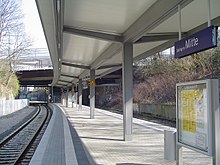Railway line Wuppertal-Oberbarmen-Solingen
| Wuppertal – Solingen | |||||||||||||||||||||||||||||||||||||||||||||||||||||||||||||||||||||||||||||||||||||||||||||||||||||||||||||||||||||||||||||||||||||||||||||||||||||||||||||||||||||||||||||||||||||||||||||||||
|---|---|---|---|---|---|---|---|---|---|---|---|---|---|---|---|---|---|---|---|---|---|---|---|---|---|---|---|---|---|---|---|---|---|---|---|---|---|---|---|---|---|---|---|---|---|---|---|---|---|---|---|---|---|---|---|---|---|---|---|---|---|---|---|---|---|---|---|---|---|---|---|---|---|---|---|---|---|---|---|---|---|---|---|---|---|---|---|---|---|---|---|---|---|---|---|---|---|---|---|---|---|---|---|---|---|---|---|---|---|---|---|---|---|---|---|---|---|---|---|---|---|---|---|---|---|---|---|---|---|---|---|---|---|---|---|---|---|---|---|---|---|---|---|---|---|---|---|---|---|---|---|---|---|---|---|---|---|---|---|---|---|---|---|---|---|---|---|---|---|---|---|---|---|---|---|---|---|---|---|---|---|---|---|---|---|---|---|---|---|---|---|---|---|
| Route number (DB) : | 2700 (W-Oberbarmen-RS-Lennep) 2705 (RS-Lennep-RS) 2706 (RS-RS-Bliedinghausen) 2675 (RS-SG) |
||||||||||||||||||||||||||||||||||||||||||||||||||||||||||||||||||||||||||||||||||||||||||||||||||||||||||||||||||||||||||||||||||||||||||||||||||||||||||||||||||||||||||||||||||||||||||||||||
| Course book section (DB) : | 450.7 | ||||||||||||||||||||||||||||||||||||||||||||||||||||||||||||||||||||||||||||||||||||||||||||||||||||||||||||||||||||||||||||||||||||||||||||||||||||||||||||||||||||||||||||||||||||||||||||||||
| Route length: | 35 km | ||||||||||||||||||||||||||||||||||||||||||||||||||||||||||||||||||||||||||||||||||||||||||||||||||||||||||||||||||||||||||||||||||||||||||||||||||||||||||||||||||||||||||||||||||||||||||||||||
| Gauge : | 1435 mm ( standard gauge ) | ||||||||||||||||||||||||||||||||||||||||||||||||||||||||||||||||||||||||||||||||||||||||||||||||||||||||||||||||||||||||||||||||||||||||||||||||||||||||||||||||||||||||||||||||||||||||||||||||
| Top speed: | 90 km / h | ||||||||||||||||||||||||||||||||||||||||||||||||||||||||||||||||||||||||||||||||||||||||||||||||||||||||||||||||||||||||||||||||||||||||||||||||||||||||||||||||||||||||||||||||||||||||||||||||
| Dual track : | (continuous) | ||||||||||||||||||||||||||||||||||||||||||||||||||||||||||||||||||||||||||||||||||||||||||||||||||||||||||||||||||||||||||||||||||||||||||||||||||||||||||||||||||||||||||||||||||||||||||||||||
|
|||||||||||||||||||||||||||||||||||||||||||||||||||||||||||||||||||||||||||||||||||||||||||||||||||||||||||||||||||||||||||||||||||||||||||||||||||||||||||||||||||||||||||||||||||||||||||||||||
The railway line Wuppertal-Oberbarmen – Solingen is a railway line in the Bergisches Land in North Rhine-Westphalia , which connects the three Bergisch cities of Wuppertal , Remscheid and Solingen . It is classified as a main line, has two tracks and is not electrified.
Today's line consists of the operational connection of three formerly independent lines, which were started and built by the Bergisch-Märkische Eisenbahn-Gesellschaft (BME) and, in some cases, continued after the nationalization by the Prussian State Railways :
- Solingen – Wuppertal-Vohwinkel railway line ,
- Railway line Wuppertal-Oberbarmen-Opladen ,
- Remscheid-Lennep – Remscheid-Hasten railway line .
In addition, the branch line to Bliedinghausen branches off at Remscheid main station, which has only been used by freight traffic since it opened.
history
Today's connection between Solingen and Wuppertal was opened in several sections and was originally part of various independent railway lines:
Ohligs Forest - Solingen (Weyersberg)
In 1867, the city of Solingen, known for its blade and scissors industry, was acquired by the Bergisch-Märkische Eisenbahn-Gesellschaft after many years of negotiations over a 5.6 kilometer branch line to the Ohligs station (then still Ohligs-Wald, from 2006 Solingen Hbf ) at the im the same year the Gruiten – Cologne-Deutz railway line opened.
The line ended in a terminal station in Solingen-Weyersberg and thus quite far outside the city center, but the line was primarily built for freight traffic and only offered modest passenger traffic.
Junction Weyersberg - Wuppertal-Vohwinkel
More than 20 years later, Solingen received a significantly better connection in the direction of the Ruhr area with the Solingen – Wuppertal-Vohwinkel line to Vohwinkel on February 12, 1890, known as the “Corkscrew Railway ” .
The passenger traffic to Solingen-Weyersberg was given up again in connection with the opening of the "corkscrew railway", the trains ran from the junction Weyersberg in a wide curve south around the Solingen city center, the newly opened station Solingen Süd was also on this route much closer to downtown Solingen.
From then on, the Solingen-Weyersberg station only served goods traffic and was shut down together with the branch line from the Weyersberg junction in 1912.
Wuppertal-Oberbarmen - Remscheid (central station)
On September 1, 1868, Remscheid was connected to the Elberfeld – Dortmund railway line in Wuppertal-Oberbarmen, which had already been opened in 1849 . The Bergisch-Märkische Eisenbahn-Gesellschaft (BME) opened its line from Rittershausen via Lennep to Remscheid at this time . The last section between Lennep and Remscheid was originally only intended as a branch line of the Wuppertal-Oberbarmen-Opladen railway and was built because the BME did not receive the concession for a railway line between Bergisch Born and Opladen until June 12, 1872.
Solingen (Hbf) - Remscheid (Hbf)
On the remaining section between Remscheid and Solingen, the construction of the railway was very difficult due to the topography; the section could only be opened in 1897 after the construction of several bridges and the Büchen tunnel .
From the Solingen Südbahnhof, a transport line opened on December 14, 1893 to the construction site of the Müngstener Bridge was built, which then became part of the connecting line to Remscheid, which was completed on July 15, 1897.
On May 17, 1897, a second track between Ohligs and the Solingen Südbahnhof was inaugurated; the double-track expansion to Remscheid continued until 1907. In 1913, the Solingen Südbahnhof was finally expanded and renamed Solingen Hbf . It was not until 1914 that the Remscheid train station was finally given the name Remscheid Hbf .
Long-distance traffic from Remscheid-Lennep
In the 1960s and 1970s, through coaches from Remscheid-Lennep provided direct train connections with southern Germany.
According to the correspondence course book of 1965, the D 803 / D 804, which was linked in Solingen-Ohligs from or to the D 403 / D 404 to / from Wuppertal-Oberbarmen, ran daily to Passau or Regensburg .
A decade later it was the E 3256, which with an ABüm and a Büm including 212 062 brought a through car train to the D 515 in Solingen-Ohligs. The express train traveled in the trunk from Munster to Munich . So it was possible to travel from Lennep (from 10:22 am) directly to the Bavarian capital (at 6:24 pm).
The pairs of trains each crossed the Müngsten bridge .
Further development

Both passenger and freight traffic on the route rose steadily; In Remscheid-Lennep , the Wippertal Railway to Wipperfürth and Marienheide, the branch to the Krebsöge station on the Wuppertal Railway from Radevormwald to Wuppertal-Oberbarmen and the Lennep – Opladen railway line became a large crossing station. In Lennep, a depot was also built to operate the lines going out from there.
After the Second World War, the operation of steam locomotives was switched to diesel locomotives, and freight traffic has declined significantly since the 1970s. Only a few companies are now served by Wuppertal / Remscheid and Solingen in freight traffic, while passenger traffic is considerable and is now handled by diesel railcars .
business
Since December 15, 2013, the entire length of the route - and beyond to Wuppertal Hauptbahnhof - has been used by the S-Bahn line S 7 Der Müngstener . Before that, the regional train with the line number RB 47 ran on the same route. The name of this line refers to the former place Müngsten in the border area of the three cities, near which the railway line crosses the valley of the Wupper on the famous Müngstener bridge .
On weekdays, trains run every 20 minutes during the day and every 30 minutes in the evenings and on weekends. However, not all trains travel the entire route, some additional journeys end (from both sides) already in Remscheid. The tariff of the Verkehrsverbund Rhein-Ruhr applies on the trains , from Solingen Hbf to Remscheid-Lüttringhausen the tariff of the Verkehrsverbund Rhein-Sieg also applies .
Diesel multiple units of the 628 series of Deutsche Bahn AG were used on the route from 1994 to 2013 . Due to the weak motorization of the vehicles and the demanding route with numerous gradients, problems and train cancellations regularly occurred, especially in autumn. After the line was put out to tender from November 2009 to July 2010, Abellio Rail NRW started operations in December 2013 with vehicles with sufficient motorized vehicles ( LINT 41 ) with stepless entry for this route . At the same time, the line was converted from a regional train to an S-Bahn.
With the beginning of the closure of the Müngstener Bridge on April 1, 2013, rail replacement traffic was used between Solingen Mitte and Remscheid Hbf. In the summer vacation 2013 this was extended to Solingen Hbf and in the summer vacation 2014 at the other end initially to Wuppertal-Oberbarmen. Due to construction work on the Rauental tunnel, there were still interruptions between Wuppertal-Ronsdorf and Wuppertal-Oberbarmen in the last two weeks of the 2014 summer vacation and on some weekends in autumn 2014.
With the timetable change on December 14, 2014, the S 7 runs for the first time since the takeover of Abellio Rail NRW in full length from Solingen Hbf over the Müngstener Bridge and Remscheid Hbf to Wuppertal Hbf.
Because of a landslide between Remscheid-Güldenwerth and the Müngstener Bridge, the route was closed from January 5, 2015 and a rail replacement service was offered. After the closure was extended several times, trains have been running on the section again since March 14, 2015.
As part of the Deutsche Bahn station offensive, the establishment of new stops along the route is currently being examined. The holding Solingen-Meigen, Remscheid-Honsberg and Wuppertal-Leibusch are currently in coordination with the VRR. However, a maximum of two of them can be selected.
modernization
The train stations along the route have been modernized for several years. This is particularly evident in Solingen, where the former main train station was completely closed in May 2006. In return, the Solingen Grünewald stop was opened as a replacement , which is not far from the old main station and is much better connected to the city and bus services. With the timetable change in December 2006, the second newly built Solingen Mitte station was also opened.
Since then, the name Solingen Hauptbahnhof has been used to describe the former Solingen-Ohligs station, which is the only stop for regional trains , regional express and intercity or intercity express trains in the Solingen city area.
Buildings
bridges
Due to the mountainous landscape with a height difference of several hundred meters, the railway line could not simply be “placed in the landscape”; instead, numerous engineering structures such as bridges and tunnels had to be built.

Well known beyond the borders of the Bergisches Land is Germany's highest railway bridge at 107 meters, the Müngstener Brücke , on which the Wupper valley is crossed between Remscheid and Solingen. Every year in autumn, the so-called "Bridge Festival" takes place here, to which special trains also run over the railway line. The bridge was inaugurated in 1897 and is the largest of the engineering structures along the route.
In addition to it, there are a number of other bridges, especially on the section between Solingen and Remscheid, just a few hundred meters away with the Windfelner Bridge, so to speak, the "little sister" of the Müngstener Bridge.
In the district of Linde von Lüttringhausen , a bridge was built in 1868 in order to use the “Royal Railway” to cross the then road to Oberbarmen / Rittershausen . A gas pipeline was later laid over this bridge. In 2014 the dilapidated bridge was demolished due to insufficient statics and was replaced by a more modern structure in 2015/16.
tunnel
Another notable building is the Rauenthaler Tunnel in Wuppertal, with which the railway between Oberbarmen and Ronsdorf crosses a ridge and the residential area on it. Two parallel tunnels were driven into the mountain for the double-track line.
At the southern portal there is a third one right next to the two tunnel tubes; this belongs to the former Langerfeld tunnel , which connected the freight yard in Wuppertal-Rauenthal with the container station in Wuppertal-Langerfeld , but has since been closed.
The eastern tube of the Rauenthaler Tunnel has also been closed for safety reasons since 2005, and trains only use the western tunnel tube. Both tubes will in future be rehabilitated and will be accessible again. To the south of the tunnel there is a deep cut to the Rauenthal train station.
The 60 m long Weyersberg tunnel in Solingen also runs separately in two parallel tubes.
In this difficult terrain (Solingen-Ohligs is 117 meters high, Remscheid 303 meters), the route had to be artificially stretched with a curved line. This added another important structure with the 105-meter-long Büchener Tunnel . The line was initially single-track, but from 1907 the second track was also passable.
literature
- Bernd Franco Hoffmann: The Bergisch-Märkische Eisenbahn. Through the valleys of Wupper, Ruhr and Volme. Sutton-Verlag, Erfurt 2015, ISBN 978-3-95400-580-2 .
Web links
NRWbahnarchiv by André Joost:
- Description of route 2675 : Solingen Hbf ↔ Remscheid Hbf
- Description of route 2700 : Wuppertal-Oberbarmen ↔ Remscheid-Lennep (↔ Opladen)
- Description of route 2705 : Remscheid-Lennep ↔ Remscheid Hbf (↔ Remscheid-Hasten)
- Description of route 2706 : Remscheid Hbf ↔ Remscheid-Bliedinghausen
further evidence:
- “In three stages through the Bergisches Land” on railways in the Bergisches Land .
- Information about rail traffic in Wuppertal
- Route description of the Solingen-Remscheid section from 1897 in a contemporary travel guide
Individual evidence
- ↑ DB Netze - Infrastructure Register
- ↑ Railway Atlas Germany . 9th edition. Schweers + Wall, Aachen 2014, ISBN 978-3-89494-145-1 .
- ^ Continued replacement rail service on the S 7. Abellio Rail NRW, accessed on March 14, 2015 .
- ↑ Landslide: Block of the S 7 line is lifted. Abellio Rail NRW, accessed on March 14, 2015 .
- ↑ Minutes of the meeting of the Board of Directors, 6. Financing of various regional rail transport infrastructure measures. (PDF) VRR AöR, accessed on December 26, 2017 .
- ^ Müngstener Brücke: Bahn is renovating both tubes. ( Memento from April 25, 2014 in the Internet Archive )
- ↑ https://eisenbahn-tunnelportale.de/lb/inhalt/tunnelportale/2675.html#weyersberg Pictures of the tunnel portals






